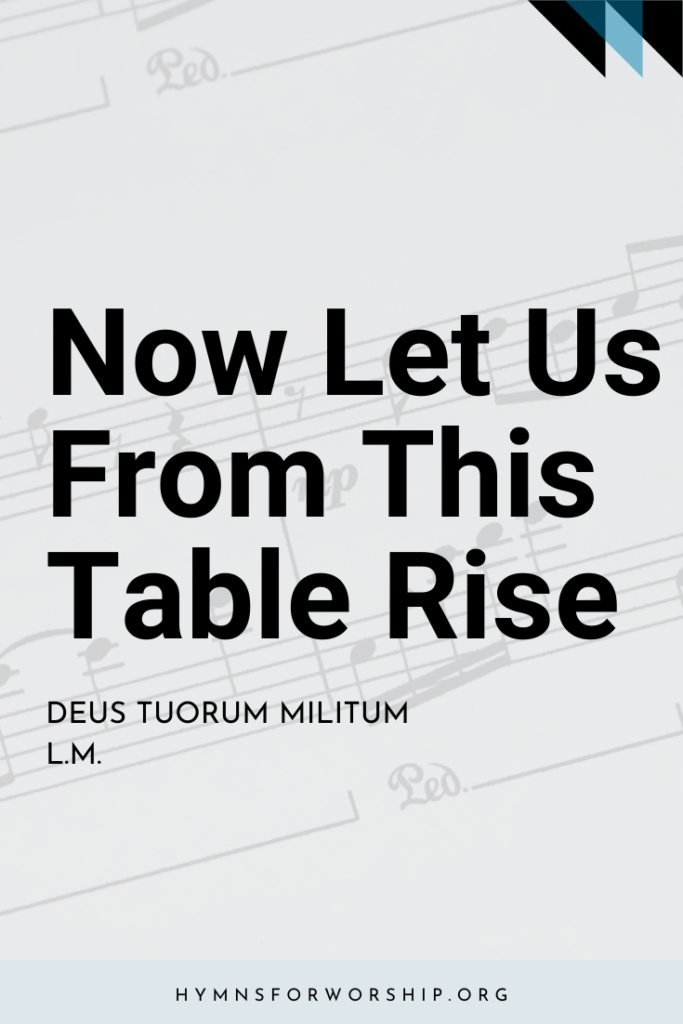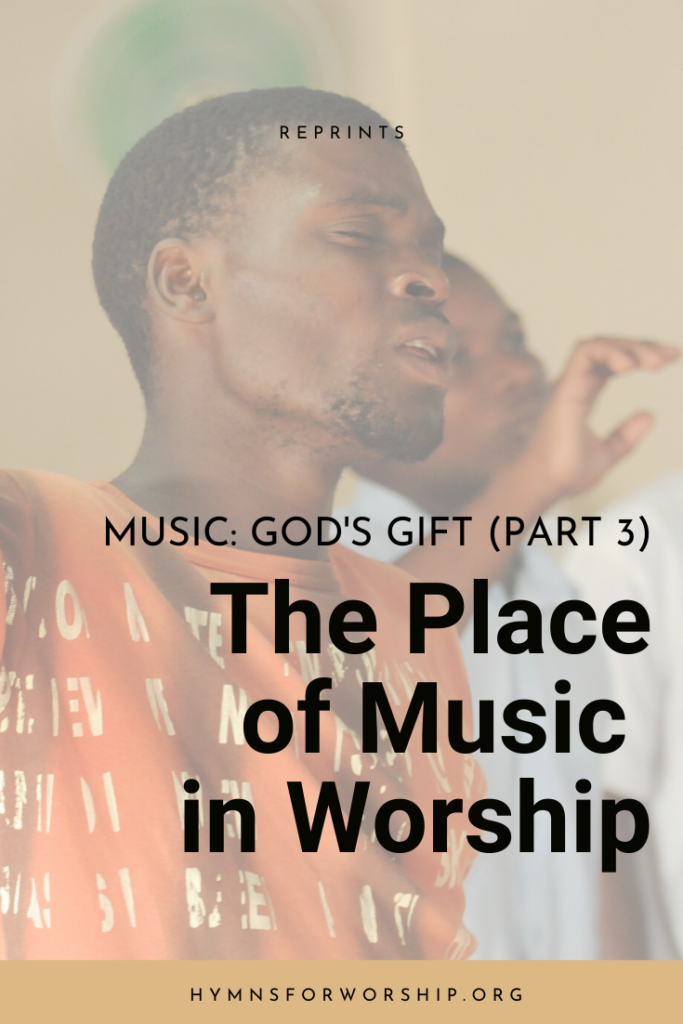In a recent statement describing Horatius Bonar, this sums up the significance of his literary endeavors — “clearly one of the most valued evangelical writers of the 19th century and he has to be bracketed with J.C. Ryle and C.H. Spurgeon in his understanding of the power of the press and inputting it to extensive use.”
Who is Horatius Bonar and do we know any hymns he has written?
Roots
George Whitefield is a preacher and evangelist known for his series of revivals that became a part of the Great Awakening. He is also known to be one of the founders of the Methodist Church. His itineraries took him across Great Britain and to many American colonies where he would speak to about 10 million people combined.
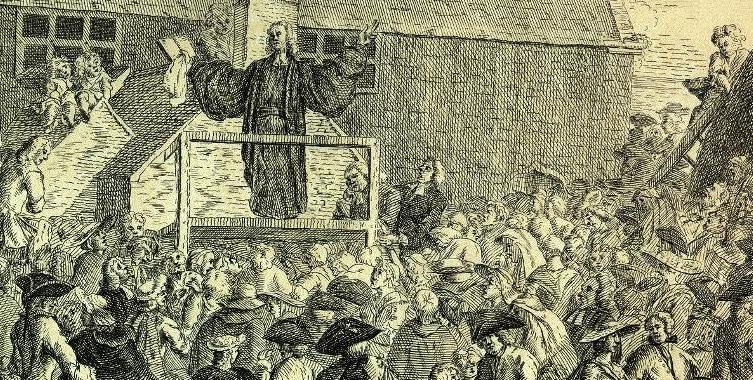
In the spring and summer of 1742, one of his speaking engagements took him to Scotland, in a village called Combuslang, a few hours travel outside of Edinburgh. Here he had the opportunity to meet ‘good old Bonner’ none other than John Bonar — a zealous preacher in this part of Scotland who, despite of his physical infirmities and inability to ride or walk would travel 23 miles from Torpichen to Cambuslang just to preach. About 20,000 people came for this evangelistic campaign and it was recorded to have been a remarkable spiritual awakening.
John Bonar has three grandsons who would then follow in his footsteps as a preacher. Andrew Alexander Bonar, John James Bonar, and this article’s main feature, Horatius Bonar. These brother were very close, that even at one point, they held a worship service where all of them preached. One on Christ the Prophet, one on Christ the Priest, and the third on Christ as King.
Writings on Bonar
Towards the end of his life, Horatius Bonar gave explicit instructions that there was no biography to be written of his life. Of this prohibition, Iain H. Murray wrote. “Bonar’s prohibition of a biography about his life stems from a desire for privacy and a fear of the flattery that often accompanies biography. For Bonar, what was most important was the work he had been given and he wanted no other memorial.”
Twenty something years later after his death, however, several essays about his hymns, compilations of his sermons, and an unfinished autobiography became available to people. Thanks to these resources, we can have a small glimpse of who Horatius Bonar is, the writer of the many splendid hymns we now sing and love.
Early Years and Theological Influence
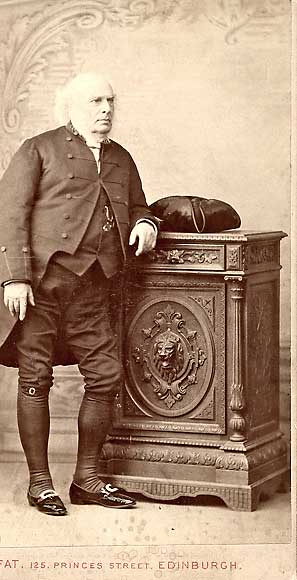
Horatius was born in Edinburgh on December 19, 1808. His parents, James Bonar and Marjory Maitland, had 9 children, all of whom miraculously survived. His father was an elder in Lady Glenorchy’s Chapel, but died when Horatius was only 13 years old, hence his greatest influences during this early formative years was his godly mother and his elder brother, James, who also worked as elder in Lady Glenorchy’s Chapel like his father.
He was educated at Edinburgh High School and Edinburgh University and took a course on Divinity. The professor of the subject at that time was Thomas Chalmers (1780-1847). Thomas Chalmers is chiefly remembered for his key role in the events that led to the formation of the Free Church of Scotland in 1843. But this was way after he met Horatius Bonar as a student.
Chalmers had an enormous influence on Bonar and his fellow students. His teachings allowed them to see Christ’s love in a fresh light. In retrospect, Bonar would always consider Chalmers as one of the greatest Christians he has ever known and admits that his teachings has a deep and lasting influence on his ministry.
He was also heavily influenced by Edward Irving, a Presbyterian preacher who preached a lot about prophetic topics. This influence is seen on some of Bonar’s hymns run a prophetic thread at which he talks about the soon coming of Christ.
Bonar was surrounded by a circle of friends (including two of his brothers) who encouraged and strengthened each other’s spirituality.
In his brother’s diary, we see entries that give us a glimpse of the kind of spiritual camaraderie Bonar enjoyed with his friends:
May 30 — In a walk round Duddingston Loch with Robert M’Cheyne and Alexander Somerville this afternoon, we had much conversation upon the leading of Providence and future days. We sang together, sitting upon a fallen oak-tree, one of the Psalms.
August 7 — This morning had an interesting and very useful conversation with John Purves…regarding the importance of looking for all comfort and joy entirely and alone to Christ’s work, and not to ourselves or our frames.
Ministerial Assignments
After graduating from university, Horatius Bonar was assigned in St. John’s, Leith (1833-1837). He worked as an assistant minister to James Lewis and had the responsibility of running Sunday school.
It was during his work with children that he began to write original hymns. He found them bored singing psalms, so he set to work to attract their interest. This resulted in great attendance during Sunday school even though at that time, psalm singing was the only form allowed in Presbyterian churches.
He was also in charge of doing mission work in a very rough area of Leith. This involves house to home visitation which consisted of going through a maze of narrow streets and lanes. From a physical standpoint, it was arduous work in that he had to ascend hundreds of stone staircases to knock on the doors of various homes.
After his stint at Leith, he was requested to pastor a congregation at North Parish Church, in Kelso (1837-1866). His effective preaching method attracted the congregation at Kelso and labored in these Scottish Borders for 29 years. Here, Bonar’s gifts as an evangelist was given time to blossom.
In 1843, he married Jane Katherine, third daughter of Robert Lundie (d. 1832), minister of Kelso. She sympathised fully with his work, and is herself said to have written religious verse. She predeceased him, as did also several members of his family. He was survived by three daughters and a son, who became a Free Church minister.
Of him was written, “He set himself to evangelism the Borderland. His name was fragrant in every little village, and at most of the farms. He conducted many meetings in farm kitchens and village schoolrooms, and often preached in the open air…The chief characteristic of his preaching was its strange solemnity. It was full of entreaty and warning. Dr. Bonar exhibited with faithful simplicity and decision the great things of the Gospel, but he was never content without applying them to the consciences of his hearers…”
Many of his sermons and writings always favored the centrality of the cross in the Christian life and to exalt the absolute sufficiency of Christ for the sinner. This thread of thought is visible in his books, tracts, and in the hundreds of hymns he wrote.
During the Disruption of 1843, Bonar found himself on the side of Chalmers who, along with other 450 ministers, left the national church, gave up salary and security, and help to build up the Free Church of Scotland. Later in 1866, he became the first minister of the newly formed Chalmers Memorial Church, and would be there until his death on July 31, 1889.
He was noted for his diligence, piety, visiting, and prayer life
Bonar’s hymns
Despite of his numerous books and tracts, Bonar is more known for his hymns. But he had only begun writing hymns in Leith for the children who attended Sunday school.
There were over 280 of them present on any given Sunday, and Bonar noted the names of all the boys and girls in the Sunday school. What struck him as he first watched them in 1833 during their times of worship was how fidgety many of them were. He soon came up with the idea of providing them with hymns of their own, set to tunes the children knew well and liked to sing. The experiment, as it were, worked, and he noticed a marked improvement in their paying attention during the times of worship in the Sabbath School.
And just as the writing of small tracts led to bigger literary projects, so the children’s hymns eventually led, in 1836, to his writing hymns that were for the use of older worshippers. He went on to publish over 600 hymns and poems during the course of his life.
During the revival of 1873-1874 in Scotland under Moody and Sankey, he wrote hymns, especially for Sankey. He also published several hymn collections, among them Songs for the Wilderness (1843-1844); Bible Hymn Book (1845); and Hymns of Faith and Hope (1857, 1861, 1866)
Bonar was a devout student of prophecy and edited the Quarterly Journal of Prophecy from its inception in 1848 until its cessation in 1873, and regularly contributed a new hymn to its pages. He believed in the imminent return of the Lord Jesus Christ, which is evident in many of his hymns.
His hymns are subjective and appealing with the purpose to fill them with love and light of Christ. He was able to consecrate a passing mood by giving it a tangible expression in verse. His best hymns are spontaneous, fluent, melodious, and devotional. Occasionally they are genuine lyrical poems. Hence, a number of his hymns have rightly led to his being regarded as the finest Scottish hymn writer of the 19th century.
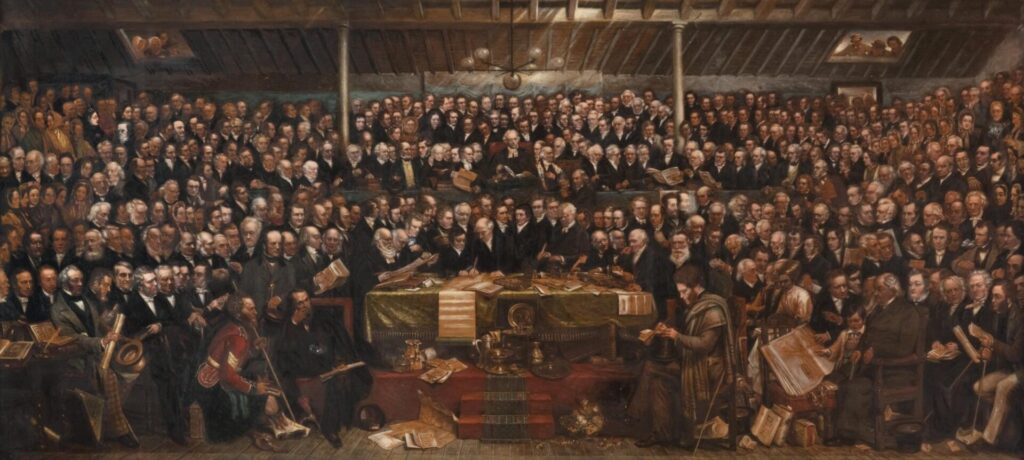
Bonar’s hymns in the SDA Hymnal
Of the 600 he wrote, five are included in the SDA Hymnal. Let’s explore them, shall we?
O Love of God, How Strong and True SDAH 79
This hymn first appeared in Hymns of Faith and Hope, 2nd Series, 1861, entitled “The Love of God.” It consisted of 10 stanzas but only 1,2,6,9, and 10 is included in the SDA Hymnal.
The tune OMBERSLEY was composed in 1872 by William Henry Gladstone, son of William Ewart Gladstone, the Grand Old Man of English politics, 4x prime minister of Great Britain. He was an accomplished organist but chose to follow a career in politics. This tune is named after a village near Worcester in the constituency that Gladstone later represented in the House of Commons.
It can also be set to JERUSALEM which was composed by H. Parry. This version was performed at the funeral of President Ronald Reagan.
The Church Has Waited Long SDAH 217
This was first published in his Bible Hymn Book (1845). The first and second stanza is based on Revelation 6:10 where God’s faithful ask — ‘How long, O Lord, holy and true, dost thou not judge and avenge our blood on them that dwell on the earth?’ The third stanza alludes to Revelation 22:4 where John describes the 144,000, that ‘they shall his face; and his name shall be in their foreheads.’ The final stanza is based on the famous Revelation 21:4 which says “And God shall wipe away all tears from their eyes; and there shall be no more death, neither sorrow, nor crying, neither shall there be any more pain; for the former things are passed away.”
The tune GARDEN CITY is composed by Horatio William Parker in 1890 for the dedication of a new church building in Garden City, Long Island. It was said that Parker grew to dislike this tune immensely, and do not recall composing it at all. The SDA Hymnal Companion editor conjectures that it is probably because of “the first musical phrase is repeated immediately, almost like a false start, bringing us halfway through the hymn without really arriving anywhere.”
I Lay My Sins on Jesus SDAH 298
This was one of those hymns written for the children at Leith for Sunday school service. Written around 1834 in four-line stanzas and was revised and published in 1843 in Bonar’s Song for the Wilderness, in 4 8-line stanzas that he titled “The Fullness of Jesus.”
The first stanza is based on John 1:29 “Behold the Lamb of God, which taketh away the sin of the world,” while the second stanza calls attention to Isaiah 1:18 “…though your sins be as scarlet, they shall be white as snow; though they be red like crimson, they shall be as wool.”
The rest of the stanzas are closely related to Bible verses that Bonar was probably using to teach the children. It was a hymn that had good gospel, but according to Bonar, it didn’t have good poetry, and he was surprised that it became so popular.
The tune BRADLEY has an interesting to it which is written in the SDA Companion: “BRADLEY was composed by Allen Foster in May 1964 on a Sabbath morning just prior to leaving home for church services. It is named for the street in Camden, New Jersey, where his wife, Gwendolyn and him resided. They had been married about 11 months at the time. First performed by her during a Philadelphia evangelistic campaign with Charles D. Brooks in 1964, and it has become one of his favorite songs. Recordings of this hymn have been made on the Chapel label by Charles Brooks as a solo, and in a choral arrangement by the Ebenezer SDA Church Choir. The melody gives a pleasant surprise in the middle of the third score. One would expect it to conclude on the high notes, but another musical phrase follows, repeating the first 4 notes of the preceding phrase (with different harmony) and then completing the cadence.”
Soon Shall the Trump of God SDAH 419
This text first appeared in a hymnal published by the American Northern Baptists in 1864, where authorship is credited to Bonar.
He had a firm belief in the literal second coming of Christ, and used these scriptures: “For the trumpet shall sound, and the dead shall be raised.” (1 Cor 15:52); “Awake and sing, ye that dwell in dust.” (Isa 26:19); “It is sown in weakness; it is raised in power” (1 For 15:43). The hymn was used in four more hymnals up to the year 1886, but in none from there to 1978.
UNITED MAN was composed by Norman Warren in his home in Morden, Surrey. It was originally written for a beautiful metrical version of Psalm 133, hence the title of the tune as the psalm is about unity. The tune name was a joke actually because in England, their famous football team is Manchester United, known as ‘Man United.’ The sharp-eyed editors spotted this when he called the tune MAN UNITED and swapped the words around.
I Heard the Voice of Jesus SDAH 465
“I Heard the Voice of Jesus Say” was one of the hymns he wrote during his tenure at Kelso. This is perhaps his most famous song, having found good reception not only in Scotland but also in the wider English-speaking world. It was not published until 1846 in his Hymns Original and Selected. It had three stanzas of 8 lines each, and in Bonar’s Hymns of Faith and Hope (1857). It was entitled “The Voice from Galilee” with the text “Of his fulness have all we received, and grace for grace.” (John 1:16)
What makes the hymn so widely appealing may well be its focus on the gospel call of Christ to come to him, look to him, drink, and rest, and the simple call to obey and to find in him all that he has promised. It is simple, sweet and encouraging.
KINGSFOLD was named after a village north of Horsham in Sussex, and was arranged by Ralph Vaughn Williams for the English Hymnal in 1906. It is a country folk song that he heard in this village, although it is known in Ireland and sung to the words “The Star of the County Down.” It was first published in Lucy Broadwood’s English County Songs in 1893. It is a fitting melody to the words, for halfway through, the three introductory notes rise instead of fall, matching the mood of the words, which also change at that point from the weary, thirsty, benighted one, to the glad, revived, enlighten pilgrim. This tune is also used for SDAH 144.


